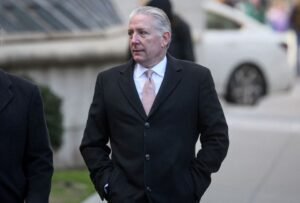U.S. and India Aim to Double Trade by 2030 Despite Tariff Disputes
The United States and India have set an ambitious goal to more than double their trade volume to $500 billion by 2030. This announcement followed a key meeting between Indian Prime Minister Narendra Modi and U.S. President Donald Trump in Washington. While the discussions emphasized strong economic ties and strategic cooperation, key challenges, including tariff disputes and geopolitical tensions, remain.
Strengthening Economic Partnerships
Both leaders reaffirmed their commitment to finalizing a trade agreement that would benefit businesses and consumers in both nations. Modi highlighted the growing potential of U.S.-India trade relations and expressed optimism about redefining global trade dynamics. While trade between the two countries amounted to $129 billion in 2024, India maintained a trade surplus of $45.7 billion. Acknowledging the need for balanced trade, both sides pledged to work toward solutions promoting fairer practices.
President Trump praised India’s recent tariff reductions but also signed a memorandum introducing “reciprocal tariffs,” which could impact key industries in both countries. The specifics of this policy are still being evaluated, but the move reflects ongoing efforts to ensure a level playing field in bilateral trade.
Advancing Defense and Strategic Cooperation
In addition to economic discussions, the meeting highlighted strengthened defense ties. The U.S. confirmed plans to increase military sales to India, including the future acquisition of advanced F-35 fighter jets. As the world’s largest importer of defense equipment, India sees these purchases as crucial in modernizing its military. Trump linked the defense partnership to shared security concerns, particularly in countering terrorism.
Strengthening Collaboration in Technology and Energy
Emerging technology was another focal point of the discussions. Modi announced initiatives to enhance U.S.-India cooperation in artificial intelligence, semiconductor manufacturing, and securing supply chains for strategic minerals. These developments are expected to strengthen both nations’ technological infrastructure and reduce dependency on other global suppliers.
Energy partnerships were also a key subject, with India showing interest in increasing its imports of U.S. liquefied natural gas (LNG). With India’s growing energy demands, such collaborations could benefit both economies in the long run.
Ongoing Challenges and Geopolitical Issues
Despite the positive outlook, challenges persist. One key issue is India’s long-standing defense relationship with Russia. Former Reserve Bank of India governor Raghuram Rajan noted that while stronger U.S.-India ties in defense are promising, India’s gradual shift from Russian arms to U.S. suppliers could further improve relations. However, India remains cautious, given its historical reliance on Russian military equipment.
Another ongoing concern is immigration policy. While no major announcements were made, discussions touched on illegal immigration, a subject that has influenced U.S.-India relations in recent years. Additionally, Trump’s broader trade policies, including tariffs on countries like China, Canada, and Mexico, could indirectly affect India’s economy.
Looking Ahead
Despite these hurdles, both leaders emphasized the importance of continued dialogue and cooperation. Daniel Balazs, a research fellow specializing in international trade, noted that while India’s ties with Russia could be a sticking point, its growing engagement with the U.S. across defense, technology, and energy signals a broader shift in global partnerships.
With the $500 billion trade target set for 2030, the next few years will be critical in shaping the future of U.S.-India economic relations. While challenges remain, the deepening collaboration marks a significant evolution in their trade and strategic dynamics, reinforcing their roles as key players in the global economy.






































Comment Template